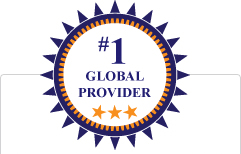...
How would you like to be a Guest Blogger for KMI? Email us at: info@kminstitute.org and let us know your topic(s)!
Unlocking Tacit Knowledge in Knowledge Management
In the last two decades, the creation and enablement of knowledge as a source for an organization’s competitive advantage has been highly emphasized. There has been a paradigm shift in how an organization's knowledge is now viewed and nurtured.
Knowledge Management is all about knowledge creation and the activities that support the creation and dissemination at various organizational levels. It starts from instilling a knowledge vision, building a collaborative culture, facilitating conversations, globalizing local knowledge, and encouraging creativity and innovation. The integration of the above processes leading to the generation of new sources of knowledge is the key to the success of any organization.
Knowledge can be both explicit and tacit. The knowledge that can be quantified and documented is explicit knowledge. It is tangible and can be conveyed through processes, documentation, books, videos, etc. However, this just forms only a fraction of any organization’s knowledge while the rest of the knowledge bound to peoples’ experiences, intuition, insights, expertise, and personal conclusions is the tacit knowledge. Recognizing the importance of this tacit knowledge and capturing it in a methodical way to make it explicit is a challenge for most organizations. The tacit knowledge may seem too fluid and inconsistent, but its fluidity is what makes it a powerful innovation tool. The conversion of tacit to explicit knowledge known as externalization is critical for an organization’s long-term success.
So how can organizations capture it?
Instilling a collaborative culture to encourage discussions and socialization among employees to get people talking about their experiences and observations, is how tacit knowledge can be assessed and used for the creation of new concepts and products.
How to do it:
Instill a knowledge-sharing culture – As the saying goes, lead by example. If leaders inculcate the culture of sharing their learning and experiences via forums like CoPs, stream, blogs, etc., people are sure to follow.
Create Best Practices directory – Encouraging a culture where people share best practices, not only enables collaboration but also saves the organization both time and money.
Nurture Community of Practices (CoPs) – The foundation of the CoPs is to connect people by encouraging conversation to build and share knowledge. The moderators should periodically reach out to its members to harvest and tag knowledge leading to its dissemination across borders and different organization levels.
Set up a Post-Mortem process – Put in place a process to document analysis and learnings from all team members at the end of each project. This will enable externalization and improvement in processes.
Set up exhaustive exit interview - These are no longer the times when an employee used to join an organization straight out of college and work till retirement. When a company loses its employee, it also loses the accompanying knowledge and experience. The need is to have an exhaustive exit strategy in place where outgoing people capture their experiences, feedback, contacts, insights, and a directory of work that can be passed onto the replacing employee to get a head start.
~~~
 Ekta Sachania is an experienced Knowledge and Content Manager based in India.
Ekta Sachania is an experienced Knowledge and Content Manager based in India.
View Ekta's LinkedIn Profile here...
Or email Ekta here...
Archives
- April 2024 (4)
- March 2024 (4)
- February 2024 (4)
- January 2024 (3)
- December 2023 (2)
- November 2023 (2)
- October 2023 (3)
- September 2023 (3)
- August 2023 (6)
- July 2023 (4)













